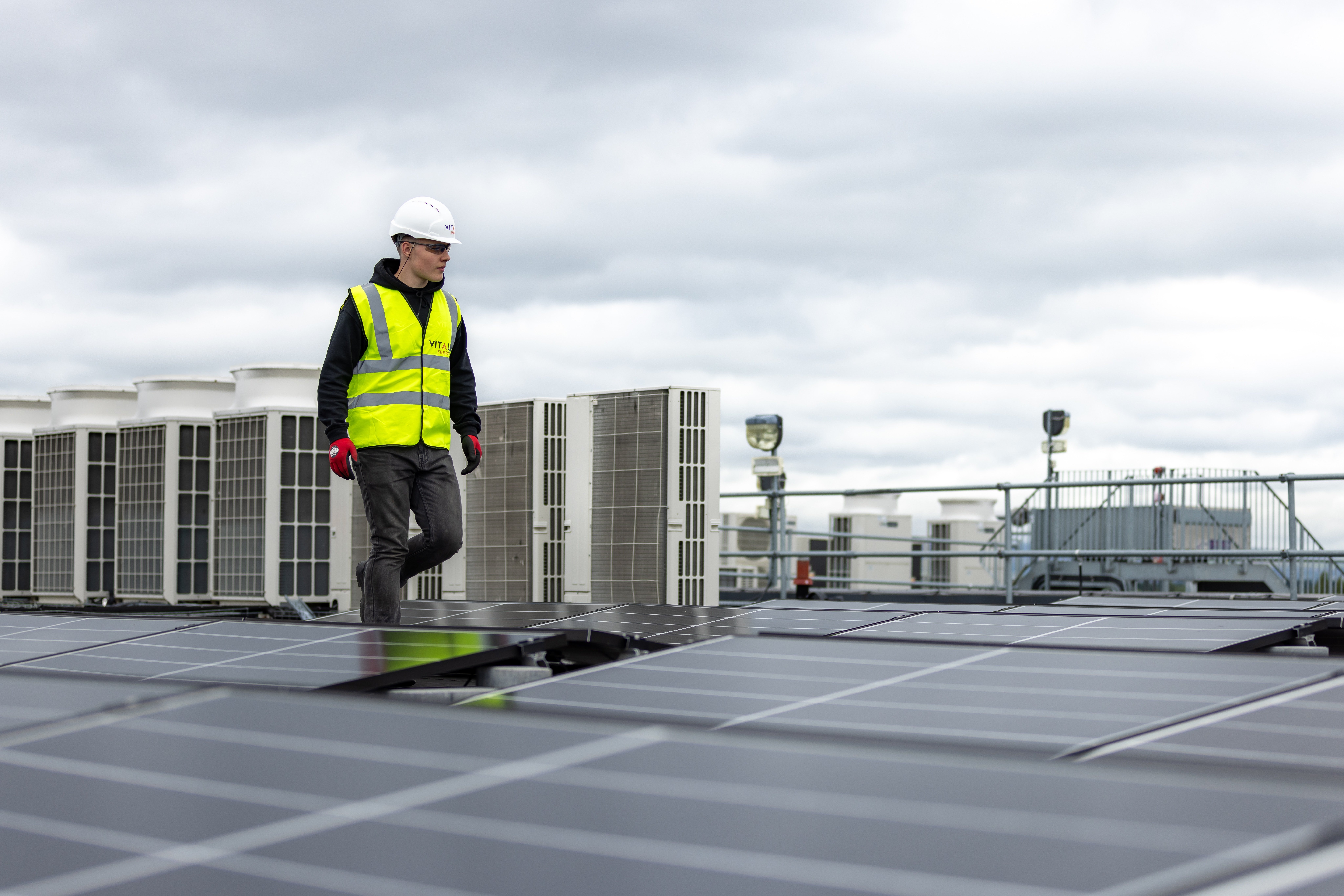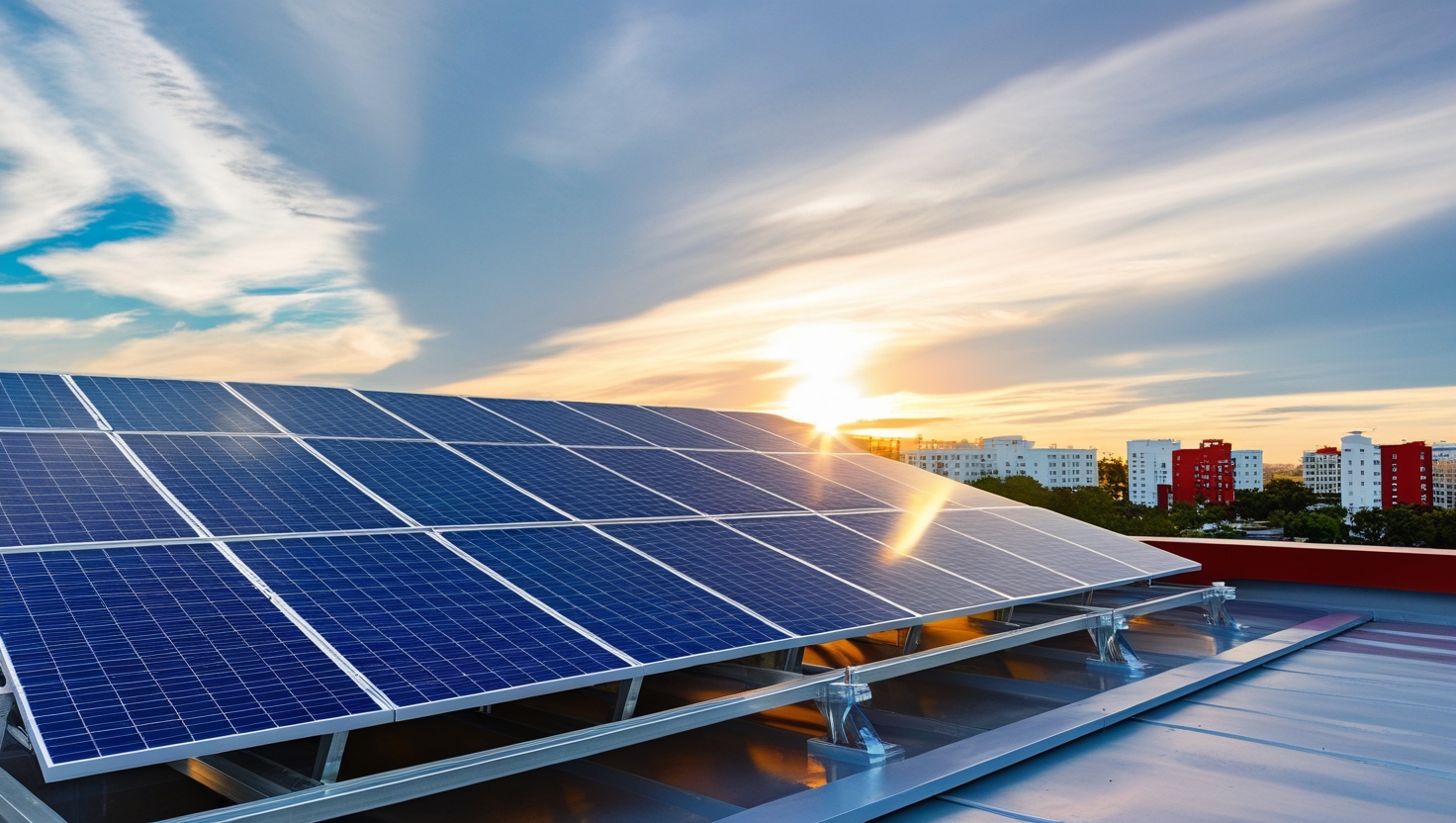
What is Solar PV System
A Solar Photovoltaic (PV) System is a technology that converts sunlight directly into electricity. It is composed of solar panels, which contain photovoltaic cells that capture sunlight and generate electrical energy.
Solar PV systems are widely used for residential, commercial, and industrial applications, providing a clean and renewable energy source that reduces reliance on fossil fuels.
How Does a Solar PV System Work?
- Solar Panels: These panels capture sunlight and convert it into direct current (DC) electricity.
- Inverter: The DC electricity is converted into alternating current (AC) electricity by an inverter.
- Electrical Distribution: The AC electricity is distributed through your electrical panel to power your devices.
- Net Metering (Optional): Excess electricity can be sent back to the grid, and you can receive credits on your utility bill.

Benefits of Installing a Solar PV System
- Reduced Energy Bills: Significantly lower or eliminate your monthly electricity bills.
- Return on Investment: Systems typically pay for themselves within a few years.
- Increased Property Value: Make your property more attractive to potential buyers.
- Carbon Footprint Reduction: Reduce your carbon emissions significantly.
- Sustainable Energy: Promote a more environmentally-friendly energy solution.
- Energy Independence: Become less dependent on traditional energy sources.
Government Incentives and Subsidies
Capital Subsidies
Up to 30-70% of the installation cost covered.
Tax Benefits
Avail tax rebates under Section 80-IA of the Income Tax Act.
Net Metering Benefits
Earn credits on your utility bill by sending excess electricity back to the grid.
Accelerated Depreciation
Businesses can recover investment costs quicker.



